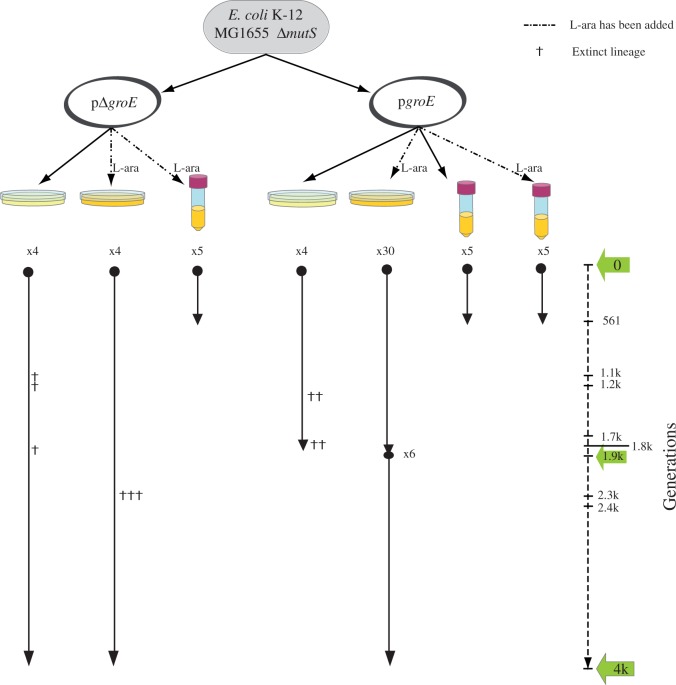Fig. 1.
Evolutionary history of populations evolved in this study. A single ancestor Escherichia coli K-12 MG1655 population lacking the repair gene mutS was evolved for hundreds to thousands of generations. Two evolution lines were derived from the ancestral population. One line included a 15-copy plasmid containing the operon groE under the control of the l-arabinose inducible promoter (pgroE) and the other line (referred to as the control), which contained the plasmid without the operon groE (pΔgroE). Each of the populations evolved under the effect of weak-to-strong genetic drift at a temperature of 37 °C. The number of independently evolved lines is indicated with an x followed by a number. The right-most dashed line represents the length (in generations) of the evolution experiment, which took about 1,900 (1.9K) and 4K generations of E. coli for populations evolving under strong genetic drift, and 561 generations in the case of populations evolving under mild genetic drift. Green arrows indicate the time points at which bacterial fitness was assayed.

